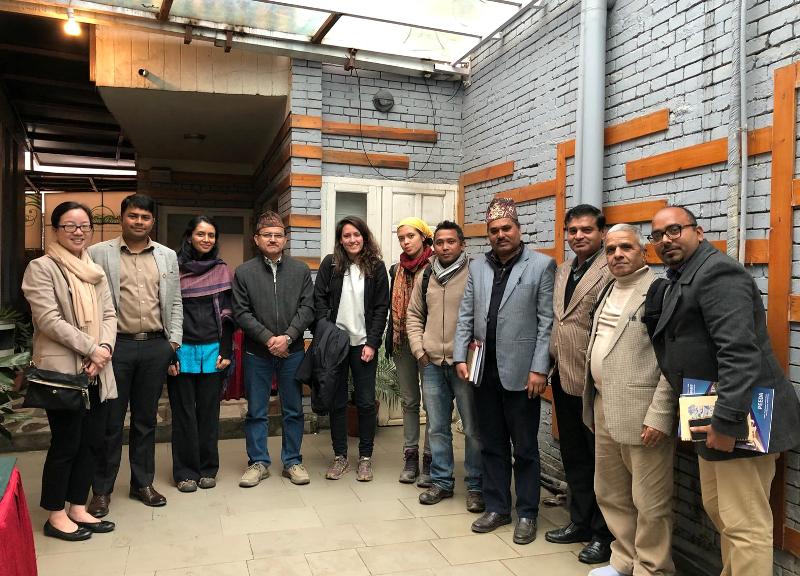The lack of post-installation support for micro-hydro users

Main Author: Topaz Maitland
On Friday 8th February 2019, HP Net (Hydro Empowerment Network) which is a collection of micro-hydro experts and associates from across South and South-East Asia, conducted a meeting in Kathmandu, Nepal, to discuss key recommendations to bring forward to HP Net’s newly appointed board of directors. Biraj Gautam, Topaz Maitland and Monica Sallares represented PEEDA at the meeting.
There are over 3000 installed micro-hydro plants (MHPs) in Nepal. Of these, a third are estimated to be operating reasonably, a third are operating with difficulties, and a third are barely functioning if at all. There are many reasons for this: most MHPs are not managed sustainably because operators and management committees lack the commercial training to understand that MHPs can and should make a profit. Of the capacity available, the average electricity used by an MHP is only 20% which demonstrates that MHPs are not being fully utilised. Without making profits, communities cannot pay back any debt, or save any money for repairs and maintenance.
There are several factors why MHPs are mismanaged. One factor is high turnover rate of trained operators. The 22-day basic training course only covers the bare minimum for MHP operation, yet it counts as qualification enough for young men to seek higher paid employment abroad or in cities. This links to another factor: the lack of available training. Should a community want further training or need to train someone new, there is no institution to provide this. Basic training also lacks the required depth needed for a community to run and maintain its own energy system, lacking good explanation of business skills, savings, and fair distribution and payment systems.
When the community forest system was created, forests were not handed over to local communities unless a local body deemed them ready, and support was provided throughout. There is no similar system for MHPs.
Possible suggested solutions included the creation of local service centres so that support does not have to come all the way from Butwal or Kathmandu when an MHP breaks down. Another popular idea is the introduction of an MHP hotline, where MHP operators can call in case of a problem and the problem can be diagnosed over the phone, or a technician can be sent.
More training needs to be given to management committees and operators regarding finance, commercialisation and technical understanding. Such training can possibly connect to the new Users Association of micro-hydro.
Regarding the problem of high operator turnover rate, suggestions include the introduction of a system where training will be covered only if the operator agrees to stay, and the possibility of training women to operate and manage MHPs.
The other key issue raised at the meeting concerned grid interconnection.
It is important to be able to interconnect MHPs to each other for a variety of reasons. This can redistribute excess electrical supply to areas with greater demand and revitalise lesser-used MHPs. Interlinked, distributed systems are also the future of energy – Nepal needs to work towards fully utilising its assets. A ‘local’ grid, or mini grid, is the term used to describe a small system of such interconnected MHPs. Another problem is then the interconnection of such mini grids to the national grid.
The main problem is finding funding to overcome the significant technological difficulties of interconnecting MHPs. Research is being done, but without a push from policy makers or finances key developments cannot be made with any speed. The technology is much more complicated than that of mini-hydro plants or solar interconnection, but not enough is being done.
The points raised at the meeting will be taken forward to HP Net’s first board meeting at the end of February 2019 in Myanmar.
Note: The information in this blog is personal view of writer
